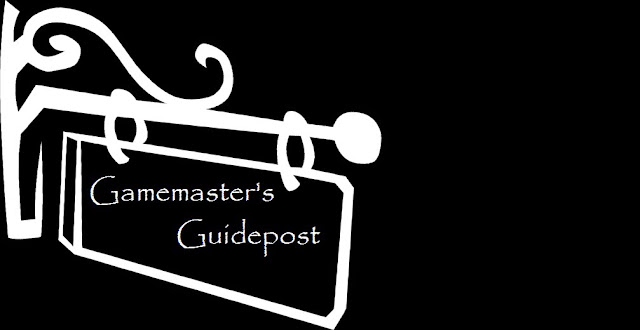GURPS fosters a play environment where all player characters are created equal. Where everyone has a specific budget for their character and all is right with the world. But what about having player characters with different point totals? After all, not everyone is created equal in the “real world” – some of us start out in a more disadvantageous position (low income families, physical or mental handicaps, etc.), while others start out in a more advantageous position (high income families, physical or mental aptitudes, etc.). That’s just life. So how to mimic something like that in a campaign? Most GMs will tell you “Don’t,” and really, that’s great advice if you have antagonistic, munchkin, or rules-lawyer players. But not all of us have to deal with that. As a GM, I’ve not had to deal with that in nearly six years. My players are thoughtful, careful, role-players who are more interested in creating a concept than they are point-counting. Yeah, I know, I got lucky. These guidelines require a working non-antagonistic relationship between players and their GM. Maybe you want to try out something similiar in your games, if so I thought I’d share my thoughts on the matter…
The Basics
Before characters are created it’s probably best to come up with a core concept for each PC and then build the character around this concept. This is where templates can be extremely useful – they give a well-defined, purposeful examination of a occupation or profession. Once the concept is fully fleshed out then the building can begin. GMs should feel free to veto players trying to max out their concept “Axel the bowman should have Weapon Master (Bow) and Heroic Archer…but can I also have Weapon Master for the longsword?” No, Axel’s player, you can’t. You said your character was a awesome bowman. Can you purchase Broadsword? Sure, but your character does “ranged stuff” – leave the sword tricks to the swordmaster character.
“Power Bands”
The least drastic of changes for split point totals is to assign a Power Band for all characters. If the campaign has a Power Band between 100 and 200 (the listed “adventurer” level in the Basic Set) then a player character party might have a 100-point, 134-point, 200-point, and 165-point group of PCs. It is recommended that if their is a Disadvantage Limit (p. B00), then it be universal across the board. This prevents players from becoming caricatures and those who are supposed to be potent via their concept from being even more powerful than that.
Not All Are Created Equal
GURPS is very much a “no random character design” system, but sometimes, throwing in a little random is not only fun – but useful for character development. The way I do it is decide on the highest and lowest point values I want, then create a chart of probabilities. So if I wanted a 200 point minimum, and 400 point maximum, I might create a chart like this:
So before character creation, have each player randomly roll their total and then go from there.
Pure Concept
The most radical option – creating characters on its concept and ignoring point totals. That’s right. Just build the character and ignore the point total. No real magic or guidelines here – just work out what a character would have with your players and go from there. It might take a bit of getting used to as far as balancing characters, but it can lead to some amazing games. I personally ran a campaign featuring a 100-point “Chosen One,” his “Guardians,” (assorted point totals from 250 to 700), and a 12,000-point demigoddess whose job it was was to protect them all and bring them together. It was one of my favorite campaigns to date.
Picking Over the Bones
These are just the barest of guidelines for campaigns focusing more on the character concept rather than the point total – that’s because running, planning, and organizing such a campaign is more art than science. You really need to know your players and what they’re going to do, how they’re going to choose their character concepts, and so on. Additionally, this sort of thing isn’t cut out for everyone. Sometimes the limits that are enforced are there for a reason – not all gaming groups (especially new ones) are going to be able to muster the trust required for a “concept first, budget second” campaign. And that’s okay! I’m not saying that one is superior over the other (because they’re not), but they do allow you, as the GM, to do different things, take different roads you might not otherwise would have considered.

